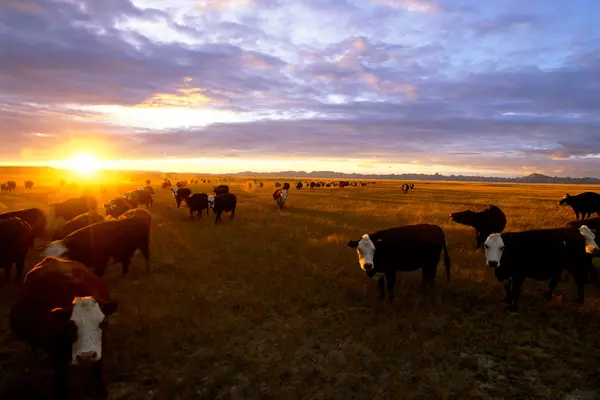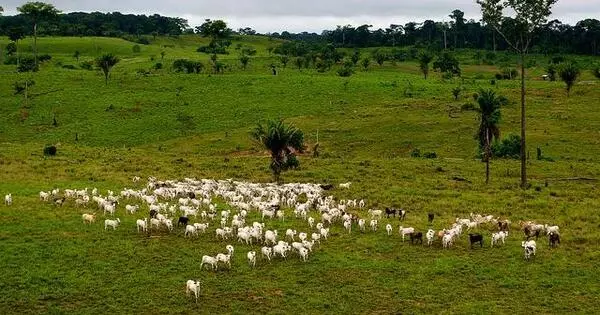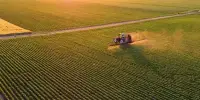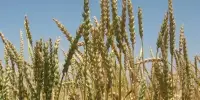Global agricultural producers must adapt to changing weather patterns. Much research has focused on crop mitigation strategies, but livestock producers face unique challenges. A new study looks at how Brazilian cattle ranchers are dealing with climate change in the Amazon. According to previous research, the dry season is increasing by up to 0.6 days per year. This puts animals under more stress, and ranchers are more likely to sell their cattle early.
A new study from the University of Illinois investigates how Brazilian cattle ranchers respond to climate change in the Amazon. According to previous research, the dry season is increasing by up to 0.6 days per year. This puts more stress on animals, and ranchers are more likely to sell their cattle early, says Marin Skidmore, assistant professor in the Department of Agricultural and Consumer Economics at U of I. Her paper is published in the American Journal of Agricultural Economics.
Brazil is the world’s second-largest beef producer and the leading exporter. Forty percent of Brazil’s cattle are located in the Amazon, which is particularly vulnerable to climate change and deforestation.
“Through talking with cattle ranchers, I kept hearing about ways they had to change their production to cope with the dry season. They are used to a dry season every year, but they noticed it was getting worse,” Skidmore says.
They can sell the animals for slaughter, and then it is no longer anyone’s responsibility to feed them. However, you may have an animal that has not yet reached slaughter weight. The animal can then be sold to a confinement facility where it is fed grain. This disconnects the food source from the current weather; it could be grain grown in the region the previous season or grain being transported from another region.
Marin Skidmore
Ranchers discuss “the accordion effect,” she observes. “Every year, the animals gain weight during the rainy season, lose weight during the dry season, and then gain weight again during the rainy season. This comes at a cost, of course, but they were able to get by with the dry season as it was. The weight loss worsened as the situation worsened, and they saw animal losses and profit losses.”
Skidmore traveled to Brazil as a Fulbright scholar and held focus groups with ranchers to learn more about their motivations. She had access to a large database of all cattle movements in Brazil, including sales and transport, when she returned to the United States, then at the University of Wisconsin. She combined nine years of cattle data with climate data, and her results confirmed what the focus groups had indicated.
“I do find evidence of increased animal sales in preparation for an extreme dry season. A rancher who would keep their animals in their own pasture through a normal dry season will instead will be more likely to sell them if they expect that the dry season will be severe,” she says.

Focus group findings indicated that ranchers make decisions about the upcoming dry season by observing rainfall patterns. During the rainy season, it rains every day. Then it becomes intermittent, and ranchers will observe how sporadic the rain gets and how early it happens.
When ranchers anticipate a prolonged dry season, they have several options.
“They can sell the animals for slaughter, and then it is no longer anyone’s responsibility to feed them. However, you may have an animal that has not yet reached slaughter weight “Skidmore claims “The animal can then be sold to a confinement facility where it is fed grain. This disconnects the food source from the current weather; it could be grain grown in the region the previous season or grain being transported from another region.”
A pasture-based operation will finish an animal much faster than a confinement operation. As a result, there will be an initial increase in cattle supply, followed by a decrease the following year, resulting in supply peaks and troughs.
Skidmore’s findings also suggest that the region’s pasture-based production is generally vulnerable to drought because many pastures are degraded and become unproductive quickly. Furthermore, current manufacturing technologies are unprepared to deal with heat stress. The animals are outside in direct sunlight with no shade or water sprinkling to keep them cool. Investing in better management practices to improve pastures and combat heat stress could thus benefit the region.
According to Skidmore, the research helps to understand how livestock producers adapt to extreme weather events. “A large portion of the climate change literature focuses on crop producers. However, animals have lives, which opens up a whole new set of adaptive strategies for livestock producers. Ranchers are taking advantage of this, and it has the potential to significantly alter the structure of the supply chain” She draws a close.
















